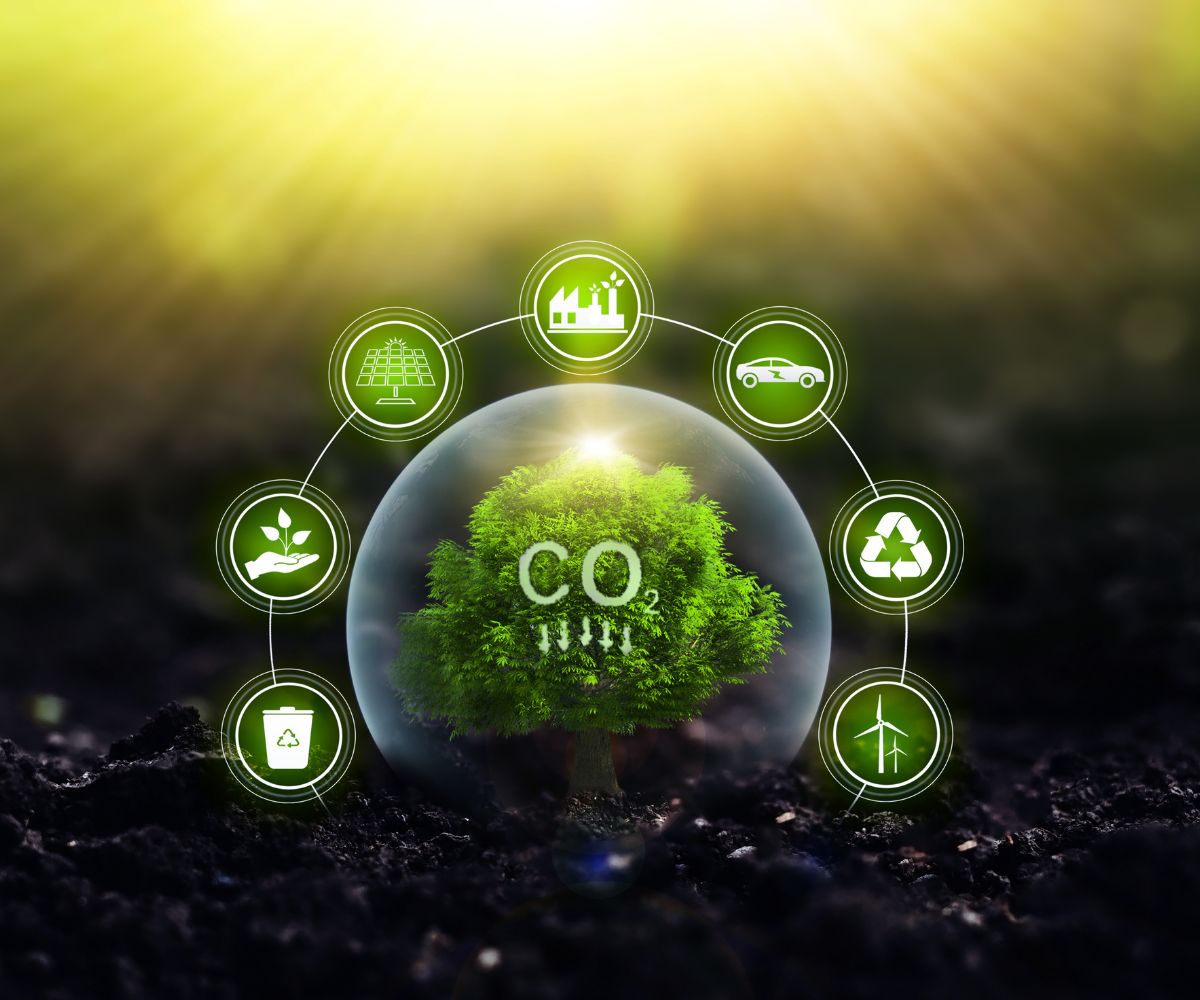
Can carbon capture make gray H2 into clean hydrogen?
October 28, 2023Most H2 is produced using fossil fuels like natural gas, but can the right methods make that green?
The term “clean hydrogen” doesn’t have a specific official definition, but on the whole, it tends to refer to H2 that is produced in a way that doesn’t generate carbon emissions.
There are a number of different methods of generating green H2 using renewable energy.
The primary issue at the moment is that the vast majority of H2 is made using methods involving fossil fuels, such as natural gas or even coal. That means that greenhouse gases are pumped into the atmosphere as a result of the production process, contributing to climate change.
However, there are carbon capture technologies that promise to be game changers by doing what their name suggests: they trap the carbon emitted by the production process so that it can be stored somewhere instead of being added to the atmosphere. That said, there are many questions left open about this type of technology. For instance, some are wondering how much it would cost in comparison to switching to renewable energy. Others have asked how effective the capturing process is, and if it is not 100 percent, how much greenhouse gas is still being emitted. Of course, there is also the question of what to do with carbon that has been captured.
Carbon capture is not a new term used only for the production of clean hydrogen fuel.
Carbon capture is a broad term that refers to any processes that remove carbon dioxide from the atmosphere or that catches emissions, storing it so it will not be added to the air. This type of process has yet to occur at a large scale. Still, it is being pursued by many companies and several politicians worldwide as a component of efforts to achieve carbon neutrality goals.
Direct Air Capture
The type of carbon capture most frequently referred to in terms of clean hydrogen is direct air capture. Essentially, at its most basic sense, it is somewhat comparable to installing a massive air filter to the exhaust of a facility to stop the carbon it emits from escaping. The Infrastructure Investment and Jobs Act of 2021 funded several projects of this nature as well as testing sites.
However, experts have said that so far, this remains an extremely costly process and requires more energy for the volume of CO2 to be captured than is feasible.
Another important question being asked has to do with what will be done with the captured carbon. While some have suggested using it in a number of different processes that require it, others are looking to underground storage sites such as abandoned mines.
Of course, this would require transportation, which would mean tankers or, more realistically, pipelines. However, carbon dioxide pipelines can rupture – and one did in 2020 in Mississippi – causing concerns regarding the safety of this type of clean hydrogen production strategy.
Some barriers that are being solved in carbon capture technology
Carbon capture technology plays a crucial role in the fight against climate change, but its implementation has been hindered by several barriers. However, recent advancements and focused efforts are beginning to address these challenges.
One of the biggest hurdles to carbon capture and storage (CCS) is the high cost and cost recovery issues. However, significant strides have been made in this area. Innovations in technology and more efficient processes are bringing down the costs associated with capturing and storing carbon dioxide. Furthermore, there’s an increasing focus on utilizing captured CO2 for commercial purposes, which could help offset the costs and even generate revenue.
Another major barrier is the lack of regulatory clarity and political support. This is gradually changing as governments around the world start to recognize the importance of CCS in achieving their climate goals. They are creating more favorable policy environments, providing financial incentives, and investing in infrastructure to facilitate the deployment of CCS projects.
There are also technical challenges such as the capacity constraints of current CCS technologies and the need for new infrastructure. However, ongoing research and development efforts are leading to more efficient capture techniques and storage solutions. Furthermore, collaborative efforts between industry, academia, and government are helping to accelerate the development and deployment of these technologies.
Finally, there’s the issue of social acceptance. Many people are skeptical about CCS due to concerns about safety, environmental impact, and other factors. However, through education and community engagement, proponents of CCS are working to build public trust and acceptance.
In conclusion, while there are substantial barriers to the widespread adoption of carbon capture technology, progress is being made in addressing these challenges. As technology continues to advance and the regulatory and social landscapes evolve, we can expect to see more widespread use of CCS in the near future.



 With over 15 years of reporting hydrogen news, we are your premier source for the latest updates and insights in hydrogen and renewable energy.
With over 15 years of reporting hydrogen news, we are your premier source for the latest updates and insights in hydrogen and renewable energy.